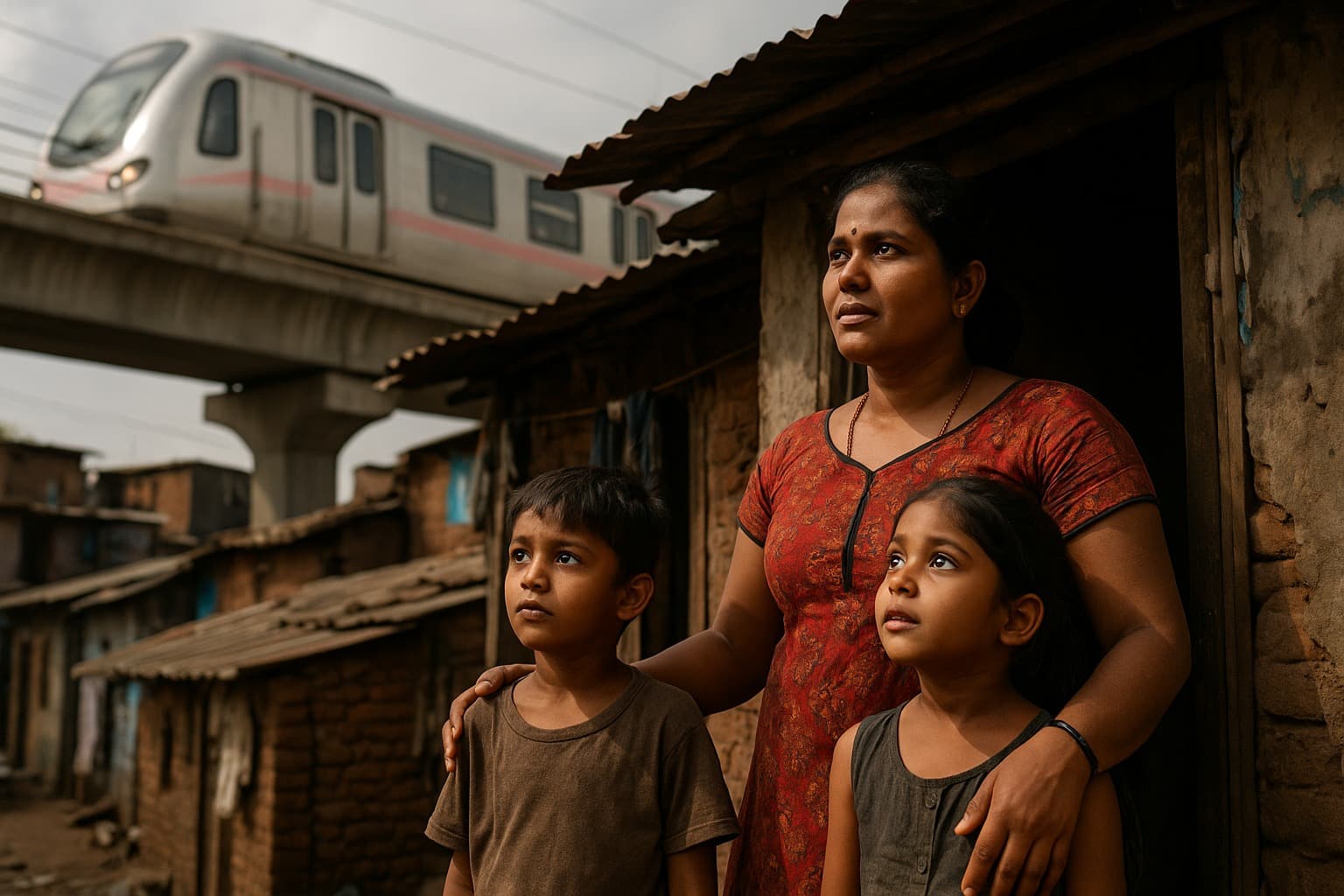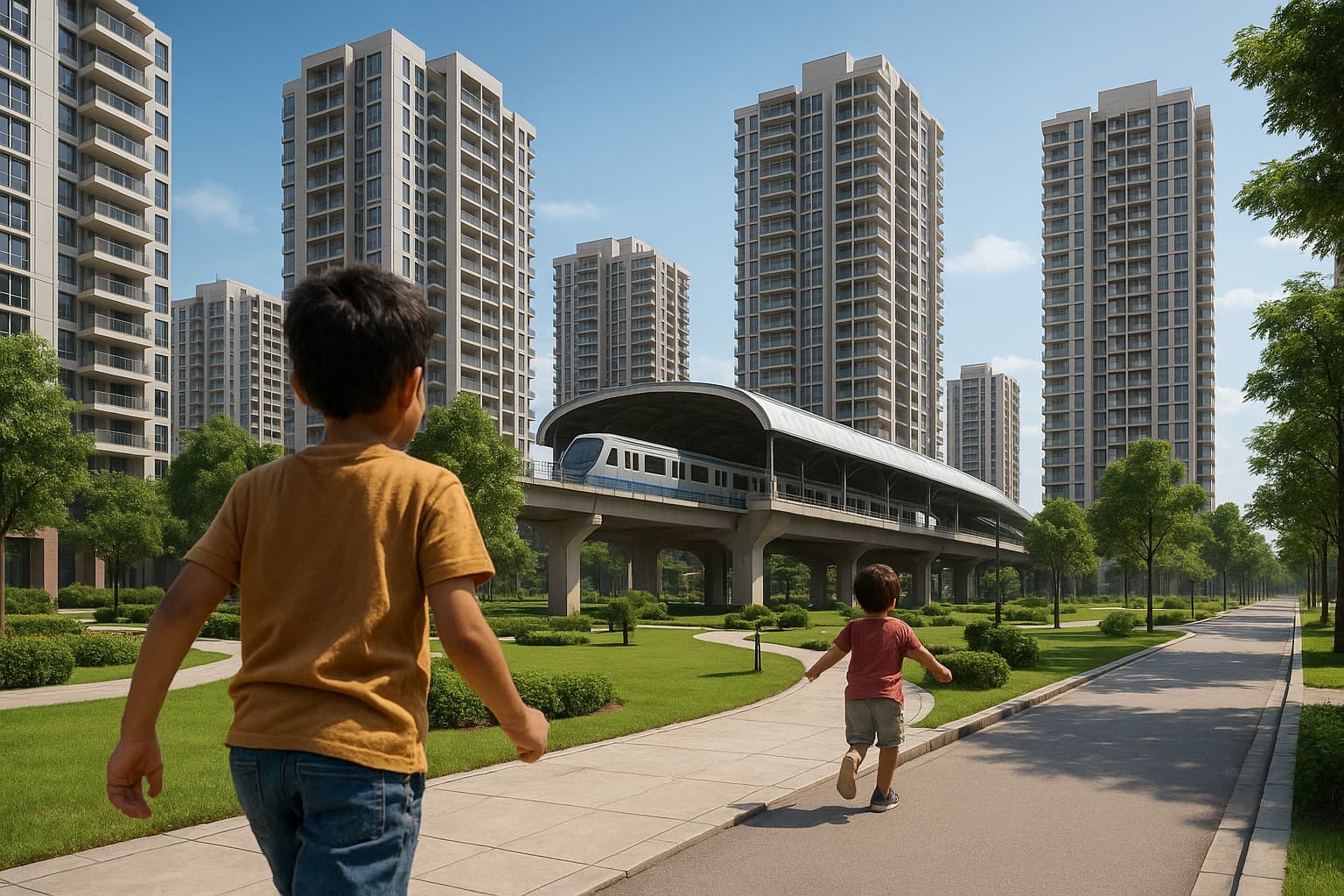Dharavi Redevelopment 2025: A New Dawn with Metro, Rail & Bus Hub
Summary
Dharavi's 2025 redevelopment plan envisions a new era with improved transport (metro, rail, bus hub), housing, and opportunities. It aims to uplift lives, integrate Dharavi with Mumbai, and provide residents with dignity and a brighter future.

Dharavi’s Heartbeat – A World Inside Lanes
Step into Dharavi and you don’t just see cramped houses; you hear life bursting at every corner. Children running through narrow gullies, women balancing water cans, men hammering leather, potters shaping clay, shopkeepers calling out to customers, and bicycles weaving through impossible traffic.
Dharavi has always been a city within a city. For decades, it was called Asia’s largest slum. But ask the people who live here, and they’ll tell you — “Dharavi is not just a slum. It’s our world. It’s where we dream.”
And now, in 2025, Dharavi stands on the brink of the biggest transformation in its 100-year history. A new metro station, expanded rail connectivity, and a modern bus hub will not only connect Dharavi to Mumbai — they will connect its people to possibilities they never had before.
A Mother’s Morning: From Struggle to Hope
Let’s imagine Meena, a mother of two, living in a one-room house in Dharavi. Every morning she wakes before sunrise to queue at the community toilet, then rushes to pack her children’s bags and send them to school in Sion.
Until now, her kids traveled nearly 90 minutes each way, changing buses, trains, and walking long stretches. Meena’s biggest fear has always been their safety.
But once the Dharavi Metro station opens, her children will reach school in 20 minutes. “For me,” she says, “the metro is not just a train. It is peace of mind. It is time saved for my children. It is hope.”
Dharavi Transport Hub – The Beating Artery of Change
The redevelopment plan centers on making Dharavi a transport hub.
🚇 Metro: Connecting Dharavi to BKC, Lower Parel, and Andheri in minutes.
🚉 Rail: Linking both Central and Western lines, reducing the city’s dependence on Dadar junction.
🚌 Bus Integration: A state-of-the-art terminal to connect Navi Mumbai, Thane, and beyond.
For Mumbai’s working poor, this means something simple yet profound: time saved, opportunities opened, and dignity restored.
Imagine a potter who sells his wares in Bandra. Earlier, he dragged heavy sacks through trains, often losing hours. Now, with Dharavi as a hub, he can reach markets quickly, carry more, and earn more.

Redevelopment – More Than Buildings
The Dharavi Redevelopment Project isn’t just about constructing towers. It’s about rebuilding lives.
Families who lived in 10×10 tin-roof rooms will move into proper apartments.
Women who once queued at public taps will turn on a tap in their own kitchen.
Children who studied by candlelight will switch on bright electric lights.
Yes, Dharavi is gaining real estate value, but what it’s truly gaining is dignity.
“I Want a Window” – The Smallest Dreams
When we talk of redevelopment, people often imagine skyscrapers and glass facades. But ask a Dharavi child what they want most, and the answer might surprise you.
Rafiq, a 12-year-old boy, once told a reporter, “I just want a window in my room.”
Why? Because his current home has none. He studies under a dim bulb, with no sunlight or fresh air. Redevelopment will give him not just a window, but a view, a breeze, and a piece of sky.
This is how change feels at the human level — small wishes, once impossible, suddenly within reach.
Real Estate – The Market Beyond the Heart
Investors and real estate experts are watching Dharavi too. Once seen as Mumbai’s shadow, it is now seen as Mumbai’s future hotspot:
Property values are expected to rise 30–50% in coming years.
Affordable housing projects will attract middle-class buyers.
Commercial spaces will flourish as Dharavi’s businesses — textiles, pottery, recycling — scale up.
But here’s the deeper truth: Dharavi is not just about profit margins. It’s about equity — giving its people the same chance at life as any Mumbaikar in a high-rise.
Stories of Change – Three Faces of Dharavi
Shabana, the Potter’s Daughter: Her family has worked with clay for generations. Their workshop floods during monsoons. With redevelopment, they’ll get a modern unit where her father can work without losing half his stock each rainy season. “Maybe,” she says, “my father will finally smile during the rains.”
Ramesh, the Leather Worker: For years, he stitched bags that sell in Europe but lived in a house with no toilet. Now, he dreams of a two-room flat where his daughters can study without shame. “I always made products for rich people. Maybe one day my children will live like them too.”
Fatima, the Street Vendor: She sells snacks outside Dharavi station, earning enough for daily meals. With a modern transport hub, her stall will see more commuters, more business. “If I earn a little more, maybe I can send my son to college instead of to work.”

Challenges – The Road is Not Easy
It would be unfair to paint Dharavi’s future as a rosy picture alone. There are real challenges:
Will every resident get fair rehabilitation?
Will industries be shifted without harming livelihoods?
Can the government deliver on time, without delays?
These questions hang heavy in the air. Change always brings fear. But what makes Dharavi different is its resilience. The people here have faced floods, fires, evictions — yet they always rebuild.
Mumbai’s Identity – Changing with Dharavi
Dharavi has always been a paradox: poverty and productivity side by side. It contributes billions to Mumbai’s economy, yet its people lived without basic dignity.
The 2025 redevelopment is not just an urban project. It’s Mumbai saying: “We cannot ignore Dharavi anymore. We must rise together.”
And when Dharavi rises, Mumbai rises with it.
Final Thoughts – A New Story for Dharavi
For too long, Dharavi was a headline of shame. Now, it can become a headline of pride.
A child will grow up in a room with a window and a playground outside.
A mother will sleep peacefully, knowing her children travel safely by metro.
A father will no longer fear eviction but sign papers to his own flat.
Dharavi 2025 is not just about metro lines, rail tracks, or bus hubs. It’s about giving millions of people something they have always deserved: a chance at dignity, a future full of dreams, and a place in Mumbai’s skyline.
Because in the end, redevelopment is not about changing buildings. It’s about changing lives.
